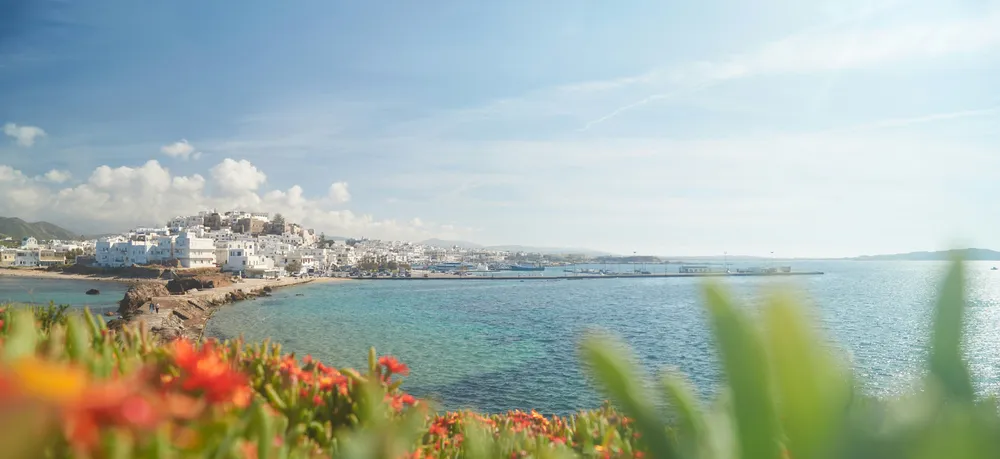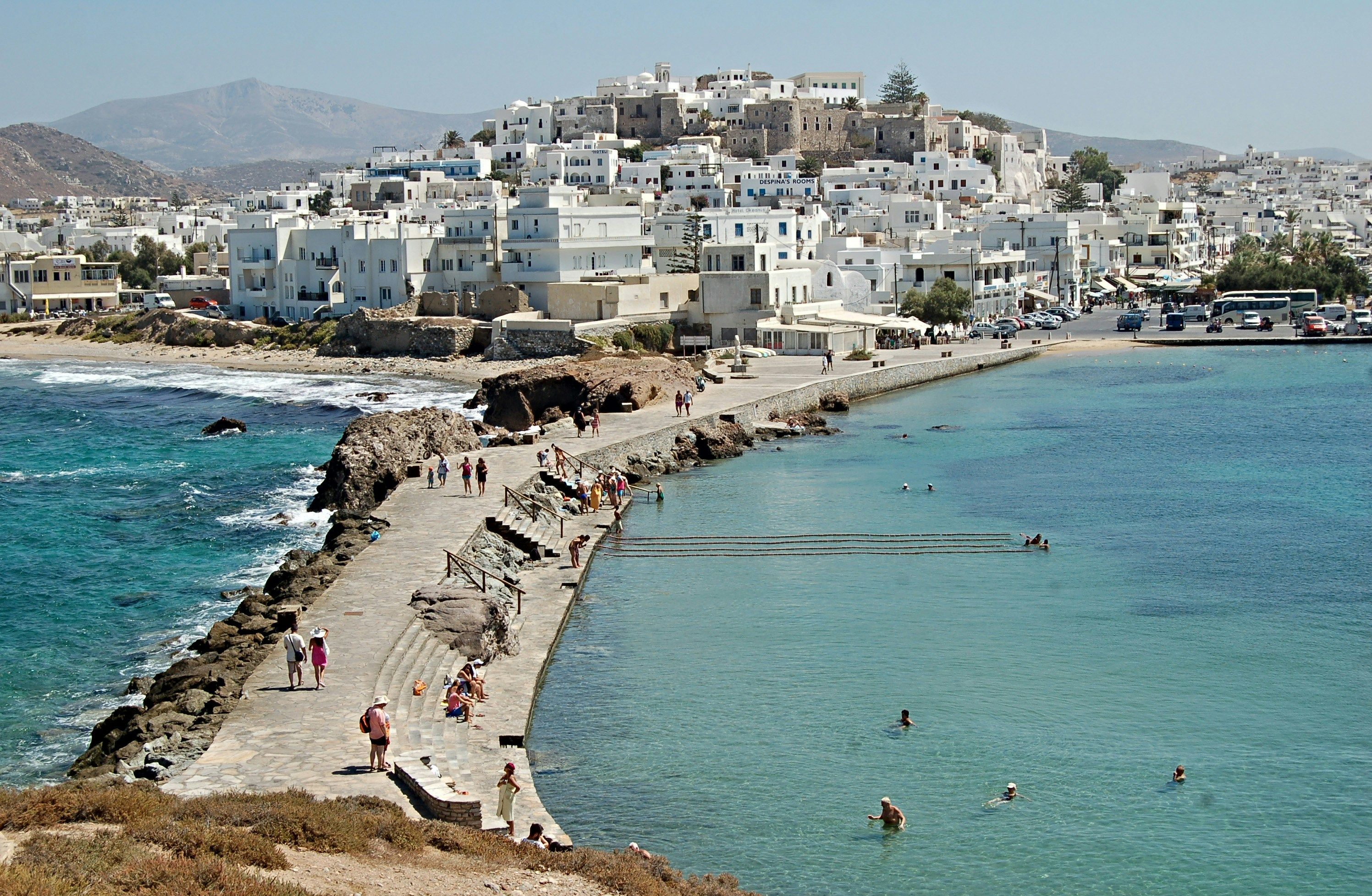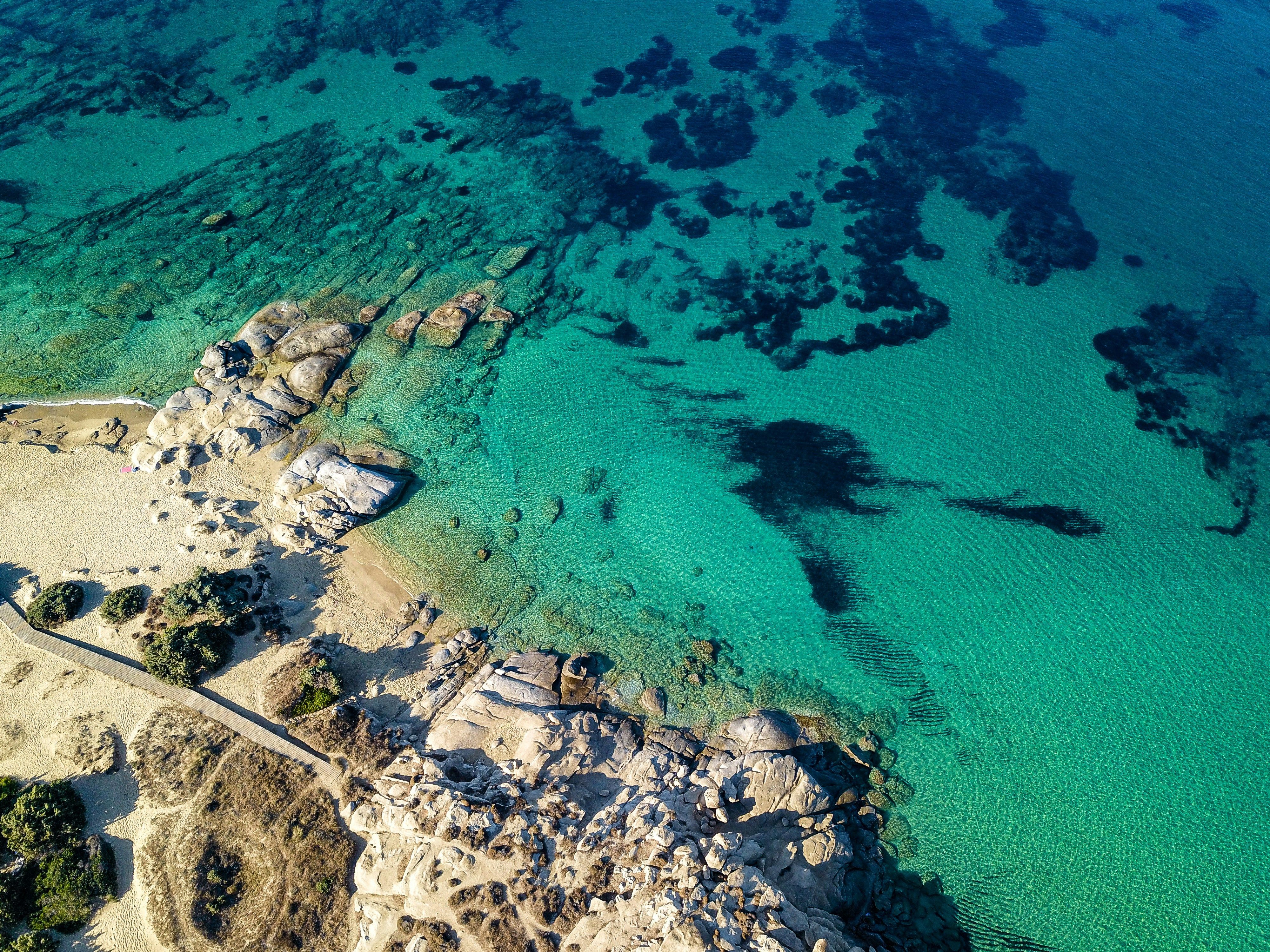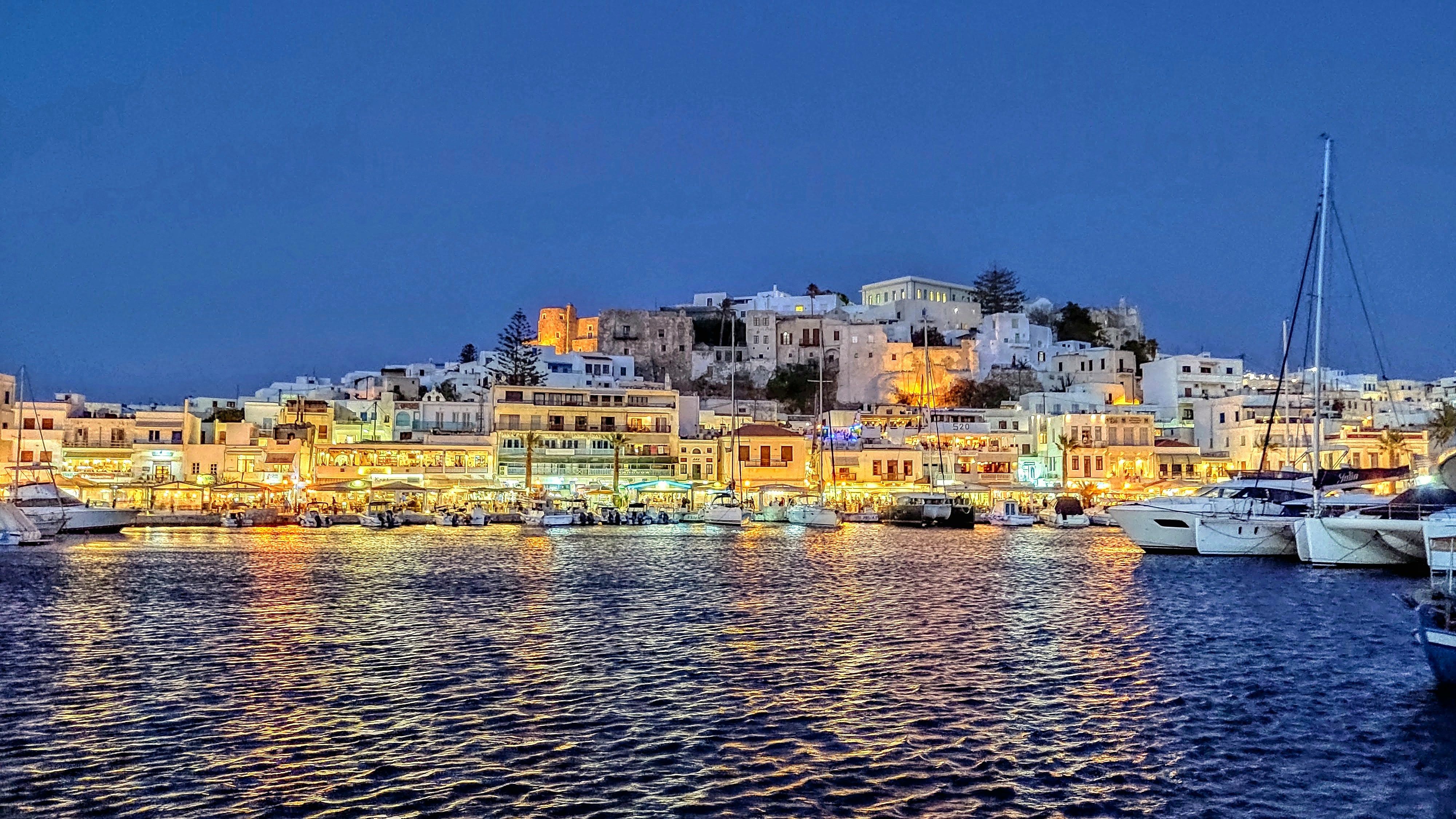Travelling from Piraeus to Naxos: Complete Ferry & Travel Guide
Travel Guides
Travel Guides


Looking to journey from Piraeus to the stunning island of Naxos? This popular Greek travel route connects Athens' main port with one of the most beautiful destinations in the Cyclades. Whether you're planning a summer getaway or an off-season adventure, the Piraeus to Naxos route offers reliable ferry connections throughout the year. With approximately 3 daily sailings and a distance of 113.7 nautical miles (210.5 km), this sea journey combines convenience with breathtaking Aegean views. While flights to Naxos are available, many travellers prefer the scenic ferry option that allows you to experience the authentic Greek island-hopping tradition. In this comprehensive guide, we'll cover everything you need to know about travelling from Piraeus to Naxos, focusing on ferry options while touching on alternative transportation methods.
When planning your journey from Piraeus to Naxos, you have two main transportation options: flying or taking a ferry. Each offers distinct advantages depending on your travel preferences, budget, and schedule.
The ferry route from Piraeus to Naxos is well-established and offers consistent service throughout the year. With approximately 3 daily sailings and 25 weekly departures, finding a convenient crossing time is relatively easy. The journey covers 113.7 nautical miles across the Aegean Sea.
The average ferry journey takes around 4 hours and 41 minutes, though this varies by vessel type. The fastest service, operated by SeaJets, can get you to Naxos in just 3 hours and 20 minutes. This premium high-speed service typically costs around £256, reflecting the convenience of reduced travel time. On the other end of the spectrum, conventional ferries may take up to 7 hours but often come with lower ticket prices.
Ferry travel offers the advantage of spectacular views, the ability to move around during your journey, and the authentic Greek island-hopping experience. You'll also avoid the hassle of airport security and can bring more luggage without strict weight restrictions.
While our focus is primarily on ferry travel, it's worth noting that flights to Naxos are available from Athens International Airport, requiring a transfer from Piraeus. The flight time is significantly shorter at approximately 45 minutes, but when factoring in transfer times to and from airports, check-in procedures, and potential delays, the total journey time can be comparable to the fastest ferry options.
You can take a ferry from Piraeus to Naxos. Ferries sail in around 4 hours and 41 minutes with about 3 sailings a day. The fastest ferry sails in around 3 hours and 20 minutes and is provided by SeaJets. Ferry prices can range depending on operator, whether it is a conventional or fast ferry and time of year, with high-speed services from SeaJets averaging around £256 for a standard ticket.
Departures start as early as 07:00, with the last departure from Piraeus to Naxos at 20:30, giving travellers flexibility in planning their journey.
The primary high-speed ferry operator on the Piraeus to Naxos route is SeaJets, known for their modern fleet of vessels that prioritise speed and comfort. Their high-speed services have revolutionised travel between the Greek islands, making day trips and short stays much more feasible.
Other ferry companies may also serve this route seasonally or with less frequent schedules, often with conventional vessels that take longer but may offer lower fares.
Ferry services between Piraeus and Naxos typically offer a range of amenities to make your journey comfortable. On SeaJets vessels, you can expect:
Larger conventional ferries might also offer additional amenities such as full-service restaurants, private cabins for longer journeys, and more extensive shopping options.

While the Piraeus to Naxos ferry route operates year-round, there are some seasonal variations to keep in mind:
With 114 monthly sailings overall, the route maintains good connectivity throughout the year, making Naxos accessible regardless of when you plan to visit.
As the main port of Athens and one of the busiest in the Mediterranean, Piraeus can seem overwhelming to first-time visitors. However, with some preparation, navigating this bustling port can be straightforward.
Piraeus port has multiple gates and departure points. Ferries to the Cyclades islands, including Naxos, typically depart from Gates E6 and E7. It's crucial to confirm your specific gate on your ticket or with your ferry operator, as assignments can change.
Getting to Piraeus is convenient from Athens:
At the port, you'll find various facilities including:
It's advisable to arrive at least 45-60 minutes before your scheduled departure, especially during the busy summer months.
Naxos port is considerably smaller and more straightforward than Piraeus. The ferry terminal is located in Naxos Town (Chora), making it conveniently close to many accommodations and attractions.
Upon arrival, you'll disembark directly into the heart of Naxos Town. The iconic Portara (Temple of Apollo) is visible from the port, standing on its own islet connected to the main island by a causeway.
Transportation options from Naxos port include:
Facilities at Naxos port include cafés, tavernas, tourist information, ATMs, and small shops. The waterfront promenade is lined with restaurants and bars, making it easy to grab refreshments upon arrival.
Is it possible to visit Naxos as a day trip from Piraeus? While technically feasible, it would make for a very long day with limited sightseeing time.
The earliest ferry departs Piraeus at 07:00, arriving in Naxos around 10:20-11:00 if you take the fastest SeaJets service. The latest return sailing leaves Naxos at 20:30, arriving back in Piraeus late in the evening.
This schedule would give you approximately 9-10 hours on Naxos, which is enough to explore Naxos Town, visit the Portara, enjoy a beach session at Agios Georgios (the town beach), and have meals. However, you would miss out on exploring the island's interior villages, more distant beaches, and ancient sites.
For a more relaxed experience, we recommend staying at least one night on Naxos. If you're determined to make a day trip work, here's a sample itinerary:
A better alternative for day-trippers might be visiting closer islands like Aegina or Hydra from Piraeus, which require significantly shorter ferry journeys.
1. The Portara (Temple of Apollo)
This massive marble doorway is the island's iconic landmark, standing on the islet of Palatia connected to Naxos Town. Dating back to the 6th century BC, it offers spectacular sunset views and is accessible via a short walk from the port. Open 24/7 with free entry.
2. Naxos Old Town and Castle
The medieval Kastro (castle) area sits atop Naxos Town, featuring narrow winding streets, Venetian mansions, and the 13th-century Catholic Cathedral. The Archaeological Museum inside the castle houses artifacts spanning from the Early Cycladic period through Byzantine times. Open daily 8:30-15:00, entry fee approximately £4.
3. Agios Prokopios and Agia Anna Beaches
Located just 5-6km from Naxos Town, these connected stretches of golden sand offer crystal-clear waters, water sports facilities, and beachside tavernas. Easily accessible by local bus (£2 each way) or taxi. Free entry to beaches with sun loungers available for rental (approximately £8-10 for two loungers and an umbrella).
4. Temple of Demeter
This well-preserved 6th century BC marble temple is located near the village of Sangri, about 11km from Naxos Town. Dedicated to the goddess of grain, it showcases the sophisticated architecture of ancient Greece. Open daily 8:30-15:30, entry fee approximately £3.
5. Traditional Mountain Villages
The villages of Apiranthos, Filoti, and Halki in the island's interior offer a glimpse into authentic Greek island life with their marble streets, traditional architecture, and local crafts. Apiranthos is particularly noteworthy for its museums and striking mountain setting. These villages are best reached by rental car or organised tour (from £40 per person).

Naxos Town (Chora)
The island's capital combines the bustling port area with the historic upper town. The waterfront is lined with restaurants, shops, and travel agencies, while the upper town consists of the Venetian castle and the atmospheric Bourgos district with its labyrinthine streets. Most visitors base themselves here for convenience.
Agios Prokopios & Agia Anna
These adjacent resort areas feature some of the island's best beaches and a well-developed tourist infrastructure with accommodations ranging from budget to luxury. Perfect for beach-focused holidays with plenty of dining options and water activities.
Plaka
Further south from Agia Anna, Plaka offers a more laid-back beach experience with a long stretch of sand and fewer facilities. The area has developed in recent years but maintains a more tranquil atmosphere than the beaches closer to town.
Mountain Villages
The villages scattered throughout Naxos' mountainous interior offer an authentic glimpse into traditional island life. Each has its own character: Apiranthos with its marble streets and museums, Filoti with its giant plane tree in the main square, and Halki with its historic distillery and neoclassical buildings.
Naxos enjoys a typical Mediterranean climate with distinct seasons that can significantly impact your travel experience.
Summer (June-September) brings hot, dry weather with temperatures regularly reaching 28-32°C (82-90°F). July and August are the hottest months, with virtually no rainfall and strong meltemi winds that can provide welcome relief from the heat but occasionally affect ferry schedules. The sea temperature is perfect for swimming, reaching 23-25°C (73-77°F).
Spring (April-May) and autumn (October-November) offer milder temperatures of 18-25°C (64-77°F) with fewer crowds and lower prices. These shoulder seasons are ideal for hiking and exploring the island's interior, though the sea may be cooler for swimming in spring. Occasional rain showers occur but rarely last long.
Winter (December-March) is the quietest period, with temperatures ranging from 10-15°C (50-59°F) and increased rainfall. Many tourist facilities close, but the island maintains its authentic character with locals going about their daily lives. Ferry service continues year-round, though with reduced frequency and more potential for weather-related disruptions.
Regarding ferry operations, the weather generally has minimal impact during summer, though the strong meltemi winds can occasionally cause delays or route modifications, particularly for high-speed services. Winter sees more weather-related disruptions, with the possibility of cancellations during storms. The most reliable sailing conditions typically occur in late spring and early autumn.
Naxos offers good value compared to more famous Cycladic islands like Mykonos or Santorini, though prices vary significantly by season.
Budget: £30-60 per night for a basic double room or studio apartment
Mid-range: £60-120 for a comfortable hotel room or quality apartment
Luxury: £120-300+ for premium accommodations with sea views or pools
Budget meal: £8-12 per person at a simple taverna
Mid-range restaurant: £15-25 per person including wine
Coffee: £2-3
Local beer: £3-5
Bottle of water: £0.50-1
Local bus ticket: £1.50-2.50 depending on distance
Taxi from port to Agios Prokopios: approximately £10-15
Daily car rental: £25-40 depending on season and vehicle type
Daily scooter rental: £15-25
For budget travellers, daily expenses can be kept to around £60-80 per person including accommodation, while mid-range travellers should budget £100-150 per day. Visiting during shoulder seasons (May-June or September-October) can save 20-30% on accommodation and avoid the summer crowds.
The ideal time to visit Naxos depends on your priorities and interests:
Peak Season (July-August)
This is when Naxos is at its liveliest, with all attractions, restaurants, and beach facilities operating at full capacity. The weather is consistently hot and dry, perfect for beach activities and swimming. However, this period also brings higher prices, advance booking requirements, and more crowded beaches and ferries. The 3 daily ferry connections from Piraeus operate at maximum frequency during this time.
Shoulder Season (May-June and September-October)
Many consider these months the perfect time to visit Naxos. The weather remains warm and pleasant (20-28°C), the sea is comfortable for swimming, and you'll encounter significantly fewer crowds. Prices for accommodation drop by 20-30% compared to peak season, and you can often find good deals on ferry tickets. Most restaurants and attractions remain open, though some beach facilities might have limited operations in early May or late October.
Off-Season (November-April)
Winter brings a completely different experience of Naxos. The island returns to its authentic rhythm, with locals focused on agriculture and everyday life. Many tourist facilities close, but you'll discover the genuine character of the island. Temperatures are mild (10-18°C), with more frequent rainfall. Hiking can be excellent during this period as the landscape turns green. Ferry connections continue but with reduced frequency.
For most visitors, late May to early July or September offers the best balance of good weather, reasonable prices, and manageable crowd levels. These periods also coincide with some interesting local events, including the Naxos Festival with cultural performances in July and August, and the Fisherman's Feast in September.
After arriving in Naxos by ferry from Piraeus, you'll find a diverse range of accommodation options to suit every budget and travel style. The island offers everything from affordable guesthouses to luxury beachfront resorts.
For budget-conscious travellers, Naxos Town (Chora) has several well-priced guesthouses and small hotels starting from around £40 per night. These are typically within walking distance of the port and main attractions like the Portara.
Couples might enjoy the boutique hotels scattered throughout the old town, with their traditional Cycladic architecture and intimate atmospheres. These typically range from £60-120 per night depending on the season.
Families will appreciate the spacious apartments and family-friendly resorts along Agios Georgios Beach, which is just a short walk from the main town. Many offer kitchenettes and multiple bedrooms, with prices starting around £80-150 per night.
For those seeking a more rustic experience, Naxos has several campsites near popular beaches like Plaka and Mikri Vigla, perfect for those arriving with camping gear or renting a campervan in Greece.

Naxos is the largest island in the Cyclades, so having a plan for transportation is essential to make the most of your visit after arriving by ferry from Piraeus.
The public bus network connects Naxos Town with major beaches and villages, with services running more frequently during summer months. Tickets are affordable, typically ranging from £1.50-3 depending on distance.
Taxis are readily available at the port and in Naxos Town, offering convenient transport for shorter journeys or when carrying luggage. Expect to pay around £10-15 for trips to nearby beaches.
Many visitors opt to rent vehicles during their stay. Scooters and ATVs are popular choices for exploring coastal areas (from about £20 per day), while cars (from about £35 per day) are better for venturing inland to mountain villages and more remote beaches.
Walking is pleasant within Naxos Town itself, with most attractions, restaurants, and shops within a 15-20 minute stroll of the port area.
Travelling from Piraeus to Naxos by ferry offers an authentic Greek island experience that begins the moment you board. With approximately 3 daily sailings and 25 weekly connections, you have plenty of flexibility to plan your perfect island getaway. The journey spans 113.7 nautical miles (210.5 km) across the Aegean Sea, delivering you to one of Greece's most diverse and enchanting islands.
Whether you choose the speedy 3 hour 20 minute service with SeaJets or prefer a more leisurely sailing, the sea route provides spectacular views and a relaxing introduction to island life. With departure times ranging from early morning (07:00) to evening (20:30), you can select the schedule that best fits your travel plans.
We recommend booking your Piraeus to Naxos ferry in advance, especially during the peak summer season when the 114 monthly sailings can fill up quickly. Secure your passage today and prepare to discover the authentic charm, stunning landscapes, and warm hospitality that make Naxos a standout destination in the Cyclades.